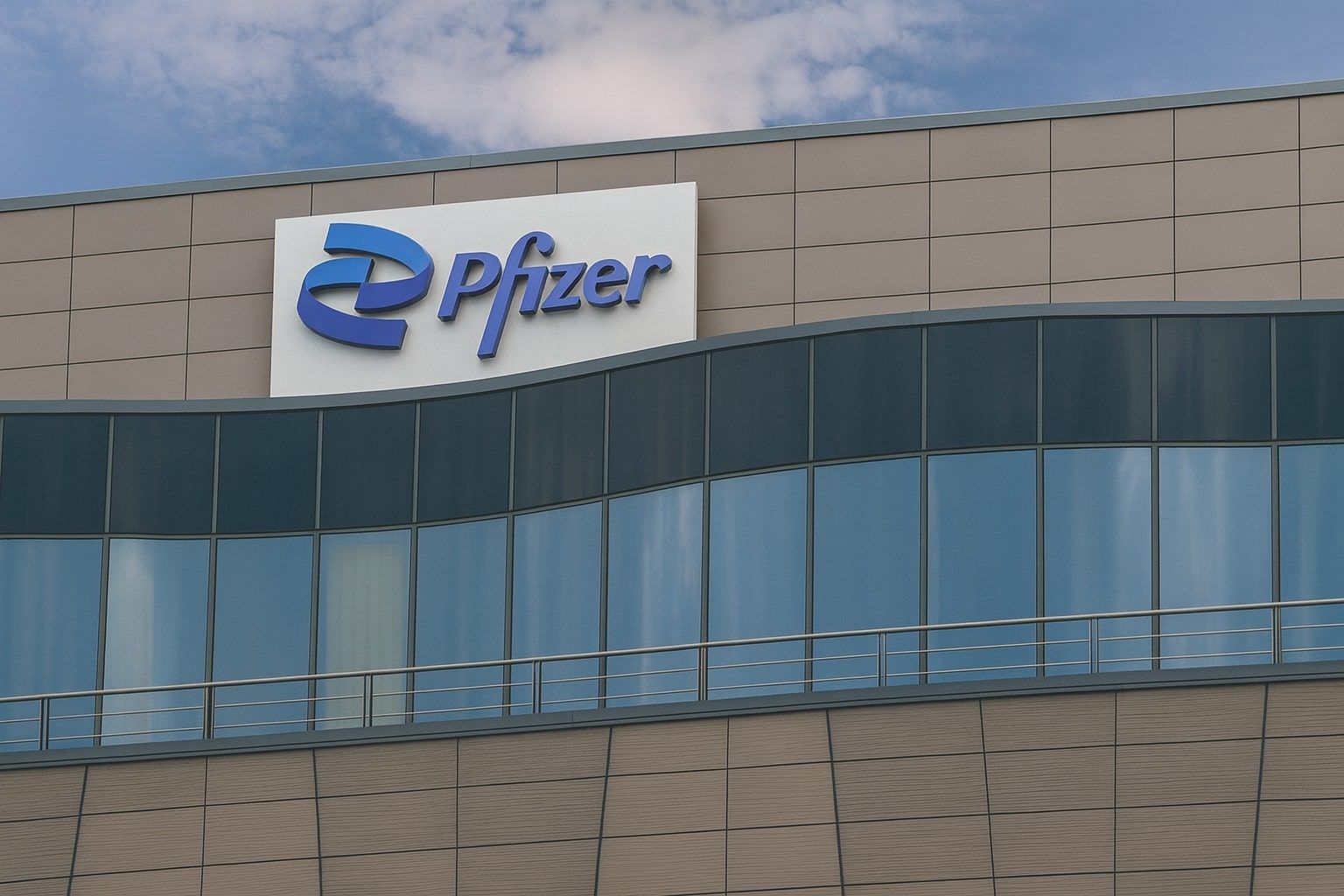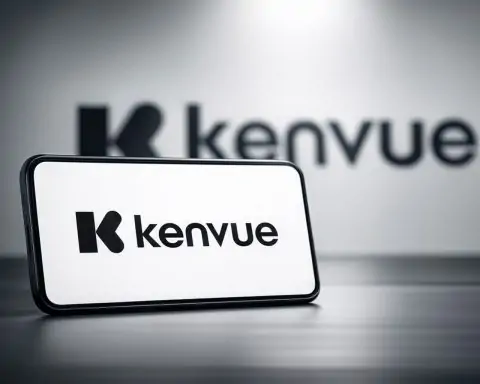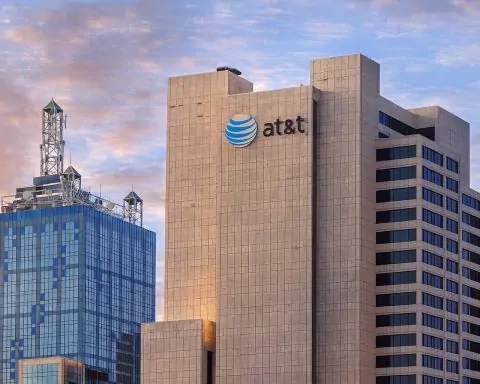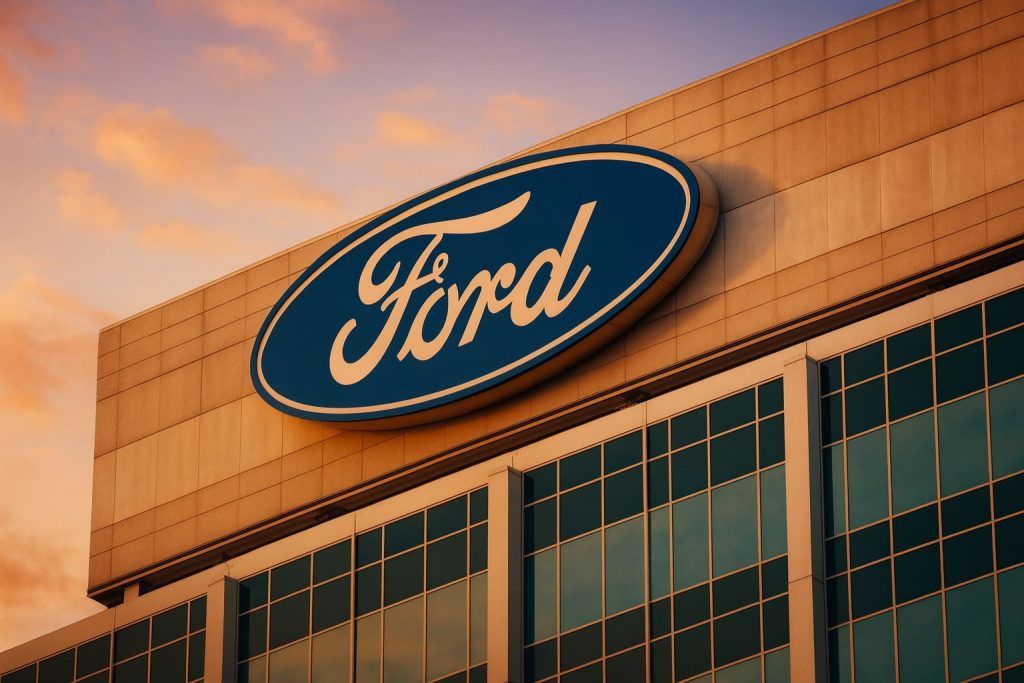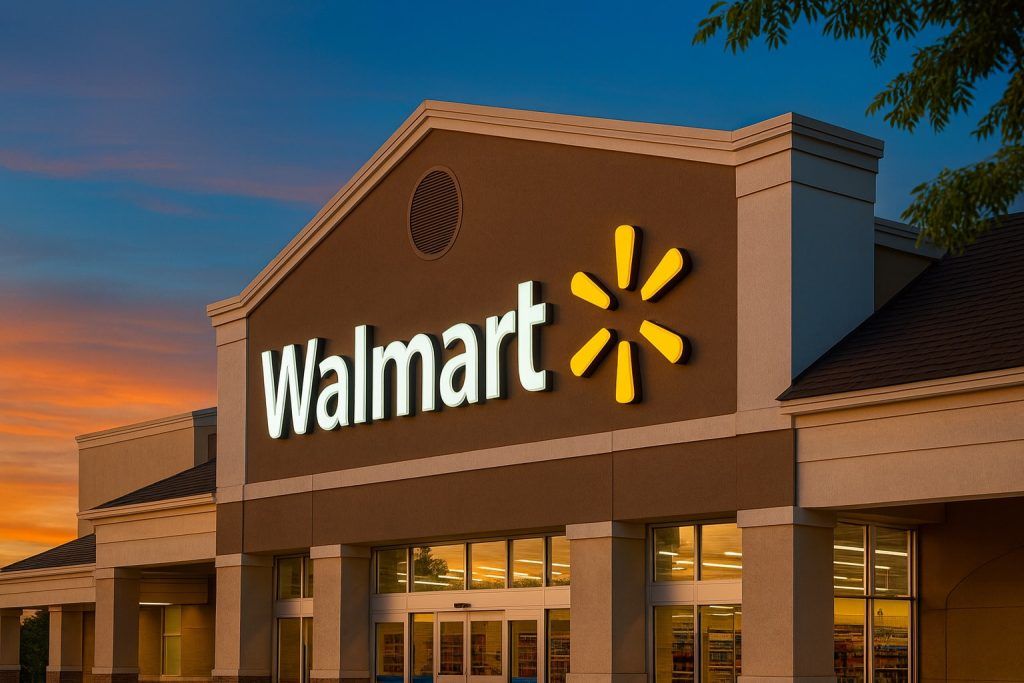New York – November 21, 2025
Pfizer (NYSE: PFE) finished Friday’s session on a strong note, with the stock climbing as investors digested a fresh U.S. FDA approval in bladder cancer, progress in obesity drugs, a multi‑billion‑dollar bond sale and one of the highest dividend yields among mega‑cap healthcare names.
Below is a deep dive into how PFE traded today, what’s driving sentiment, and what to watch next if you follow Pfizer stock.
PFE stock today: price action and trading snapshot
On Friday, November 21, 2025, Pfizer shares:
- Closed at:$25.04
- Daily move:+2.62% versus Thursday’s close
- Intraday range: roughly $24.6–$25.5
- Volume: about 73 million shares, slightly below the 50‑day average near 75 million [1]
- 52‑week high: $27.69 (October 3, 2025), leaving PFE still about 10% below that level [2]
Pfizer outperformed several large‑cap pharma peers on the day, beating Johnson & Johnson and Eli Lilly, though it trailed Abbott Laboratories’ gain. [3]
Despite today’s bounce, PFE remains modestly down on a year‑to‑date basis and trades well below its pandemic‑era highs, when COVID‑19 vaccines and antivirals drove record earnings. [4]
What moved Pfizer stock today?
Today’s rally didn’t come from a single headline, but from a cluster of positive catalysts arriving within days of each other.
1. Landmark FDA approval in bladder cancer
Pfizer and Astellas announced that the U.S. FDA approved PADCEV (enfortumab vedotin‑ejfv) plus Keytruda (pembrolizumab) as a perioperative treatment (before and after surgery) for adults with muscle‑invasive bladder cancer (MIBC) who can’t receive cisplatin‑based chemotherapy. [5]
Key points from the approval:
- The PADCEV+Keytruda regimen is described as the first and only FDA‑approved perioperative regimen in this setting to show a meaningful survival advantage over surgery alone. [6]
- Phase 3 data showed substantial reductions in risk of recurrence and death, with a two‑year survival probability close to 80% for the combination, according to summaries of the EV‑303 trial. [7]
Since PADCEV came with the 2023 Seagen acquisition, the new indication not only reinforces Pfizer’s oncology strategy but also helps justify its sizeable M&A spend by expanding the addressable market for a key cancer franchise. [8]
2. Positive data for Pfizer’s mRNA flu vaccine
News flow around Pfizer’s experimental mRNA flu vaccine also supported sentiment. A study cited in market reports found that Pfizer’s new mRNA flu shot outperformed traditional influenza vaccines against predominant strains, helping explain why shares were “trading higher” in Friday coverage. [9]
While flu vaccines are not as lucrative as some oncology or obesity drugs, strong data here:
- Reinforces Pfizer’s mRNA platform credibility beyond COVID‑19.
- Strengthens longer‑term revenue diversification away from pandemic‑related products. [10]
3. $6 billion notes offering shores up the balance sheet
After the close of trading, Pfizer disclosed that it had completed a $6 billion public offering of notes across multiple maturities (ranging from 2027 to 2065) with a mix of floating‑rate and fixed‑rate tranches. [11]
According to the filing and accompanying coverage:
- The issue included seven different note tranches, from short‑dated floating‑rate notes to long‑dated 5.6–5.7% coupons.
- The deal was executed off an existing shelf registration and underwritten by a syndicate of major global banks. [12]
This fresh capital is widely seen as:
- Partly funding the Metsera obesity acquisition (roughly $7 billion plus contingent value rights). [13]
- Supporting ongoing R&D and debt‑management efforts after several years of heavy deal‑making. [14]
Investors generally accept higher leverage when it is tied to high‑growth therapeutic areas like obesity and oncology, though it does add interest‑expense and refinancing risk.
4. Obesity pivot reinforced by Metsera deal closing
Earlier this month, Pfizer closed its acquisition of Metsera, Inc., a clinical‑stage biopharma focused on obesity and cardiometabolic diseases. [15]
With Metsera, Pfizer gains:
- MET‑097i, an injectable GLP‑1 receptor agonist about to begin Phase 3 trials.
- MET‑233i, a monthly amylin analogue in early‑stage trials.
- An oral GLP‑1 candidate and additional pre‑clinical hormone‑based obesity assets. [16]
Management has framed the deal as a “deliberate investment in the future of medicine” and a way to compete more directly in one of the fastest‑growing pharma markets dominated today by Novo Nordisk and Eli Lilly. [17]
5. Ongoing halo from raised 2025 profit guidance
On November 4, Pfizer reported third‑quarter 2025 results:
- Revenue: $16.7 billion, down about 6–7% year over year as COVID products continue to fade. [18]
- Non‑COVID portfolio revenue: +4% operational growth, highlighting progress in newer launches and acquired products. [19]
- Adjusted diluted EPS: $0.87, beating analyst expectations and prior guidance. [20]
Crucially, Pfizer reaffirmed its 2025 revenue outlook of $61–64 billion while raising and tightening its full‑year EPS guidance to $3.00–$3.15. [21]
That combination—lower sales but better‑than‑feared margins and a higher profit bar—has underpinned a slow improvement in sentiment among value and dividend investors, even if growth‑oriented funds remain cautious.
Dividend and valuation: why income investors keep circling PFE
One reason Pfizer keeps popping up in dividend screens and on TV shows is its unusually high yield for a blue‑chip healthcare stock.
A near‑7% yield from a long‑running dividend
Recent dividend and pricing data show that:
- Pfizer currently pays $0.43 per share quarterly, or about $1.72 annually. [22]
- At roughly $25 per share, that equates to a forward dividend yield around 6.8–7.0%. [23]
- The Q4 2025 dividend will be Pfizer’s 348th consecutive quarterly dividend. [24]
Some outlets note that the yield has hovered near or above 7% for much of 2025, prompting debate about whether it signals opportunity or risk. [25]
Cheap on earnings metrics — but with caveats
On valuation:
- PFE’s trailing P/E ratio is around 14–15x, based on roughly $1.7 in trailing twelve‑month EPS and the current share price. [26]
- Several data providers peg Pfizer’s forward P/E near 8x based on 2025 earnings estimates, a discount to the broader market and to many pharma peers. [27]
- One relative‑valuation model based on historical P/E multiples suggests a “fair value” near $32 per share, implying about 30% upside from current levels—though that’s only a model, not a guarantee. [28]
The flip side: trailing payout ratios are very high because COVID‑era earnings have normalised. That makes the generous dividend heavily dependent on management’s ability to deliver on its EPS guidance and cost‑saving targets over the next few years. [29]
Beyond COVID: key growth drivers for Pfizer
Pfizer’s investment case now rests less on COVID cash flows and more on three emerging pillars: oncology, obesity/cardiometabolic disease and vaccines.
Oncology momentum
- The PADCEV + Keytruda approval gives Pfizer an expanded foothold in bladder cancer, an area with significant unmet need. [30]
- Earlier acquisitions, including Seagen, have significantly broadened Pfizer’s antibody‑drug conjugate (ADC) portfolio, one of the hottest sub‑fields in oncology. [31]
If uptake matches expectations, these therapies can help offset upcoming losses of exclusivity (LOEs) on legacy drugs as generics enter the market. [32]
Obesity and cardiometabolic disease
The Metsera acquisition is central to Pfizer’s effort to participate in the explosive GLP‑1 market:
- Metsera adds multiple GLP‑1 and amylin candidates at various stages, including a weekly/monthly injectable GLP‑1 about to start Phase 3. [33]
- Management has signalled that the deal will be dilutive through 2030, as Pfizer spends heavily to push these drugs through late‑stage trials, before turning accretive if the franchises succeed.
Investors are watching closely to see whether Pfizer can carve out meaningful share in a space currently dominated by incumbents with multi‑year head starts.
Vaccines: RSV, pneumococcal and mRNA
Drilling into vaccines:
- Pfizer’s RSV vaccine Abrysvo, including the maternal immunisation indication, addresses infants’ first six months of life through antibodies passed from mother to baby and is featured in public‑health guidance for older adults and high‑risk groups.
- The company maintains a broad pipeline of late‑stage vaccine candidates and updates its public product pipeline regularly, highlighting dozens of Phase 2 and Phase 3 programs.
- The mRNA flu study that helped lift the stock today underscores Pfizer’s intent to turn its mRNA know‑how into recurring, seasonal revenue, not just pandemic‑driven spikes.
What are analysts saying about PFE now?
Recent research commentary paints a mixed but gradually improving picture:
- Zacks recently highlighted Pfizer as a “trending stock” but kept a neutral stance, noting that while returns have been slightly negative over the last month, the risk/reward is improving as new products ramp.
- A Nasdaq analysis emphasised that new and acquired drugs grew about 9% operationally in the first nine months of 2025, led by oncology and other non‑COVID launches, even as LOE risk looms later in the decade.
- Dividend‑focused commentators remain divided: some argue Pfizer’s 6.8–7.0% yield is attractive but warn that the payout is only as safe as management’s ability to navigate patent expiries, integrate acquisitions and keep earnings on track.
In short, Wall Street’s tone has shifted from outright pessimism to cautious optimism—but not yet to full‑throated enthusiasm.
Key risks to keep in mind
Even after today’s rally, Pfizer is not a low‑risk story:
- Patent cliffs and pricing pressure
- Several important medicines will face generic or biosimilar competition later this decade, just as newer assets are still ramping.
- Drug‑pricing reforms, including Medicaid and Medicare negotiations, continue to pressure margins across Big Pharma.
- Execution on obesity & oncology bets
- GLP‑1 and ADC markets are intensely competitive; trial setbacks, safety issues or slower‑than‑expected uptake could undermine the investment thesis around Metsera and Seagen.
- Leverage and interest‑rate sensitivity
- With tens of billions in acquisition‑related debt and now a fresh $6 billion note issuance, Pfizer must balance shareholder returns with ongoing de‑leveraging, especially if rates stay higher for longer.
- Legal and regulatory overhangs
- Recent settlements over ADHD drug allegations in Texas and other legal matters show litigation remains part of the backdrop for large pharma.
Is PFE stock a buy after today’s move?
From a high‑level, non‑personalised perspective:
- Income‑oriented investors may view PFE as a high‑yield defensive name, with a long dividend history, a sub‑market valuation multiple, and visible cost‑cutting and earnings‑stabilisation efforts.
- Growth‑oriented investors may prefer to wait for clearer traction in obesity and oncology, or for more evidence that Pfizer can re‑accelerate revenue in a sustainable way without relying on COVID products.
- Risk‑averse investors must weigh the comfort of a large, diversified pharma balance sheet against the uncertainties of patent expiries, regulatory shifts and big‑ticket M&A.
Only you can decide whether PFE fits your goals, risk tolerance and time horizon. This article is for information and news purposes only and is not investment advice or a recommendation to buy or sell any security. Consider speaking with a qualified financial adviser before making investment decisions.
What to watch next for Pfizer stock
Looking beyond today’s close, PFE watchers will likely focus on:
- Full‑year 2025 results and 2026 guidance, where management has promised to update the financial impact of the Metsera acquisition and its broader cost‑savings program.
- Uptake of PADCEV + Keytruda in newly approved bladder‑cancer indications and any early revenue commentary from Pfizer and partners.
- Progress on GLP‑1 and amylin programs, including the formal start of Phase 3 trials for MET‑097i and combination strategies with MET‑233i.
- Trends in dividend coverage, as investors watch whether earnings growth can comfortably support the near‑7% yield without constraining de‑leveraging or future R&D.
For now, Pfizer’s story on November 21, 2025 is one of early progress in a multi‑year turnaround: a battered COVID winner trying to reinvent itself around oncology, obesity and next‑generation vaccines—while paying you a sizeable dividend to wait and see if the strategy works.
References
1. finance.yahoo.com, 2. www.marketwatch.com, 3. www.marketwatch.com, 4. 247wallst.com, 5. www.marketscreener.com, 6. www.morningstar.com, 7. www.urologytimes.com, 8. stockanalysis.com, 9. stockanalysis.com, 10. www.pfizer.com, 11. www.gurufocus.com, 12. www.gurufocus.com, 13. www.pfizer.com, 14. www.stocktitan.net, 15. www.pfizer.com, 16. www.pfizer.com, 17. www.pfizer.com, 18. www.stocktitan.net, 19. www.stocktitan.net, 20. www.stocktitan.net, 21. www.stocktitan.net, 22. stockanalysis.com, 23. stocksguide.com, 24. www.pfizer.com, 25. www.fool.com, 26. www.financecharts.com, 27. www.gurufocus.com, 28. valueinvesting.io, 29. www.stocktitan.net, 30. www.marketscreener.com, 31. stockanalysis.com, 32. www.nasdaq.com, 33. www.pfizer.com
